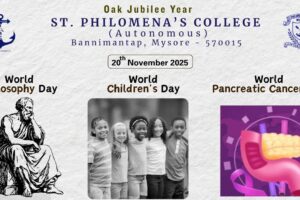
Report on Experiential Learning at High Field Tea Factory and Karnataka Siri Horticulture in Cunoor-Ooty
PG department of Commerce and Economics jointly organized experiential learning by visiting High Field Tea Factory in Cunoor and Karnataka Siri Horticulture Ooty on 25th and 26th of June 2024. Experiential learning is a hands-on approach that enables students to gain practical knowledge through direct experience. Visiting a tea factory offered a unique opportunity to understand the intricate process of tea production, from plucking the leaves to packaging the final product. This report provides a detailed overview of the tea processing stages observed during the visit.

Objectives of the Visit
- Understanding Tea Cultivation: To learn about the cultivation and harvesting of tea leaves.
- Tea Processing Techniques: To observe and understand the various stages involved in tea processing.
- Quality Control: To understand the measures taken to ensure the quality of tea.
- Sustainable Practices: To learn about sustainable and eco-friendly practices in tea production.
- Industry Insights: To gain insights into the tea industry, including market trends and challenges.
Day-1: Visit of High Field Tea Estate and Factory at Coonoor, Tamil Nadu
Tea Processing Stages

1. Plucking
- Method: Tea leaves are carefully plucked by hand or using mechanical pluckers. The quality of tea depends significantly on the plucking process, typically involving the top two leaves and a bud.
- Timing: Plucking is done at specific intervals to ensure the best quality leaves are harvested.
2. Withering
- Objective: The freshly plucked leaves are spread out to reduce their moisture content by about 50%.
- Process: The leaves are withered in troughs using either natural air or heated air circulation.
- Duration: This process can take 12-18 hours, depending on the weather and type of tea.

3. Rolling
- Purpose: The withered leaves are rolled to break the leaf cells and release the natural juices, which contribute to the flavor and aroma.
- Equipment: Rolling machines are used to twist and curl the leaves.
- Outcome: The rolled leaves begin the oxidation process, which is crucial for flavor development.
4. Oxidation (Fermentation)
- Significance: Oxidation is a key stage where the tea leaves develop their characteristic flavor, aroma, and color.
- Conditions: The rolled leaves are spread out in a cool, humid environment to oxidize.
- Duration: This process varies depending on the type of tea being produced; black tea undergoes full oxidation, while green tea is minimally oxidized.

5. Drying (Firing)
- Objective: To halt the oxidation process and reduce the moisture content to about 3%.
- Methods: The leaves are dried using hot air in dryers or ovens.
- Outcome: The drying process stabilizes the tea and gives it a shelf-stable form.
6. Sorting and Grading
- Purpose: The dried tea leaves are sorted and graded based on size and quality.
- Techniques: Various sieves and sorting machines are used to separate the leaves into different grades, such as whole leaf, broken leaf, and fannings.
7. Packaging
- Final Step: The graded tea is packed in different forms, such as loose tea, tea bags, or bulk packaging for export.
- Quality Control: Packaging includes quality checks to ensure consistency and prevent contamination.
Visit to Chocolate and essential oil factory:
During an industrial visit to a chocolate factory and an essential oil factory in Coonoor, students experienced firsthand the meticulous processes involved in creating these products. At the chocolate factory, they observed the transformation of cocoa beans into various types of chocolates, witnessing stages from roasting to tempering and molding. The tour highlighted the artisanal methods used to ensure high quality and rich flavors. Visitors also enjoyed sampling different chocolate varieties and understanding the significance of locally sourced ingredients. At the essential oil factory, students learned about the cultivation of aromatic plants and the extraction process of essential oils through steam distillation. The factory showcased a range of oils, including eucalyptus and lavender, emphasizing their therapeutic benefits and applications.
Day -2: Visit to Karnataka Siri Horticulture Garden in Ooty:
Students visited the Karnataka Siri Horticulture Garden in Ooty, a sprawling botanical garden renowned for its diverse plant species and beautifully landscaped gardens. They were greeted by an array of colorful flowers and meticulously maintained lawns, offering a serene and picturesque environment. The guided tour provided insights into the various sections of the garden, including the fern house, rose garden, and medicinal plant area. Students gained knowledge of various horticultural practices used to cultivate and maintain the plants. The highlight of the visit was the topiary garden, featuring creatively shaped shrubs and plants that added a whimsical touch to the experience. They also visited the bonsai garden, which showcased the art of growing miniature trees. The importance of biodiversity and conservation efforts was evident throughout the tour. The visit concluded with a leisurely walk through the garden, allowing students to appreciate the beauty of nature. Overall, the day at the Karnataka Siri Horticulture Garden provided a blend of education and relaxation, making the students inspired and enriched.

Learning Outcomes
- Comprehensive Understanding: Students will gain a thorough understanding of the tea processing stages and their importance in determining tea quality.
- Appreciation of Craftsmanship: Students will appreciate the meticulous work involved in producing high-quality tea.
- Sustainable Practices: Knowledge of sustainable methods used in tea production, such as organic farming and waste management.
- Industry Knowledge: Insights into the business aspects of the tea industry, including market dynamics and consumer preferences.
Conclusion
The visit to the tea factory provided an invaluable experiential learning opportunity for students, enabling them to witness the complex processes involved in tea production. This hands-on experience will enhance their academic knowledge and foster a deeper appreciation for the tea industry.This detailed report on tea processing at a tea factory highlights the educational value of such experiential learning visits, providing students with practical insights and industry knowledge.



